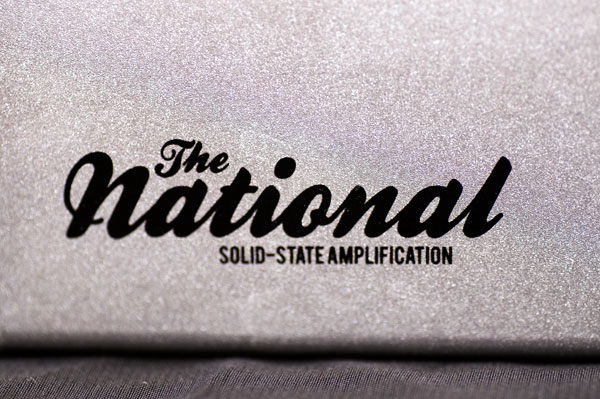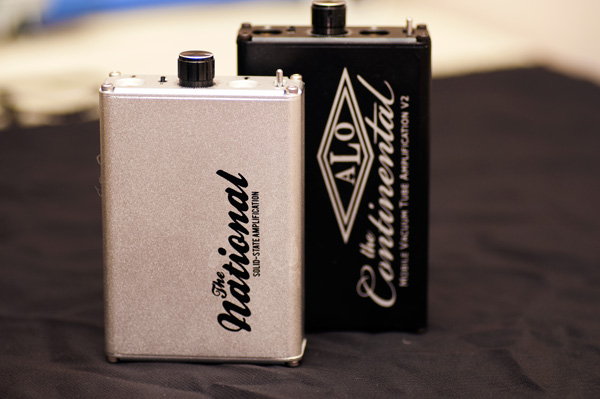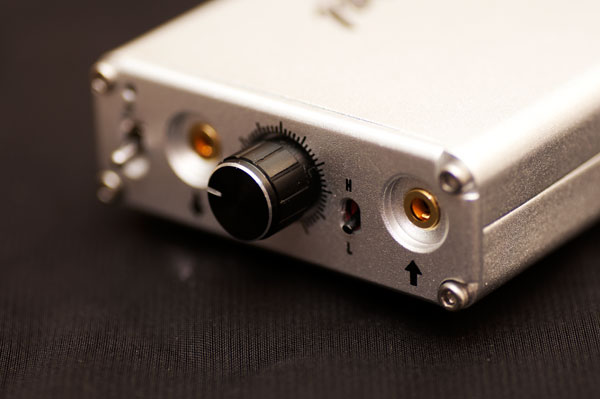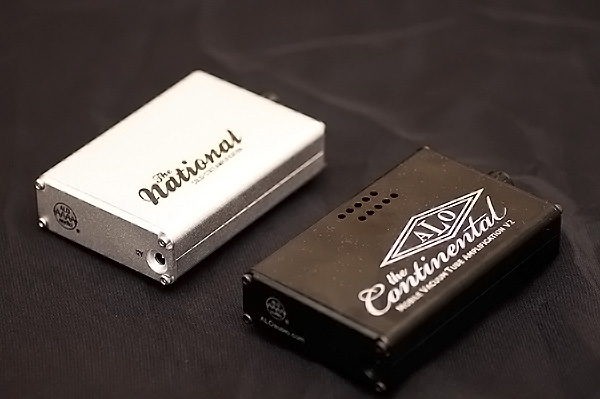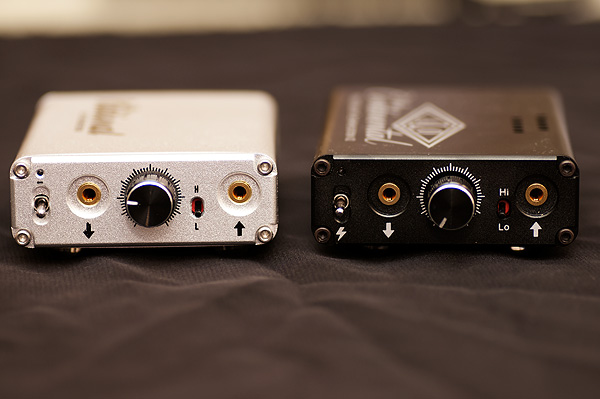The ALO Audio National & The Continental are a solid-state and vacuum tube-based portable amplifier respectively. They are priced at $399 and $599 SRP.
Disclaimer: The ALO Audio National & The Continental were sent to us in exchange for our honest opinion in this review. We thank ALO Audio for this opportunity.
To learn more about ALO Audio products on Headfonics you can click here.
Note, this review follows our new scoring guidelines for 2020 which you can read up on here.
They say you could be waiting for ages and then two buses arrive at once so which one do you take? Depends on where you are going, the fare and the route right? For ALO Audio those two buses are the National and the Continental headphone amps. Both quite different in many respects but both offering similar messages.
I was lucky enough to manage to buy the Continental a week before ALO kindly sent me over the National for review so I decided I would see what route and direction each would take side by side and see which one I would choose.
I can tell you this I wish I could ride both buses at the same time. Yes, they are different but both excite me and both are top quality in their approach and sound presentation I can honestly say I would want both and can probably just about justify it.
Background
A short story behind these two amps is probably required at this point. A while back ALO put together the Continental v1 and then a little later the v2 (with gain switching for low impedance earphones) based on tube design with a nice little but quite rare Raytheon 6111 NOS tube tucked inside and since they launched it these amps have been flying off the shelves due to rave reviews and the scarcity of the 6111 tube.
Yup the message is this particular bus (amp shall we say from this point onwards?) is only going to be in service for a short period of time so get it while it lasts so, bingo!, you have a collector’s item right there and then for audiophiles.
But how do you build on the success of a collector’s item? If the reviews are strong then surely the sound is the top priority here and not the tube itself? Can it be replicated in a sustainable fashion?
Well step up the National amp last month with its solid-state build design and reported house sound that is very much the Continental without that lovely tube. Well, I generalize a touch but the aim was to recreate the Continental in a solid-state form so the tube issue did not prevent a success story from being a very short preamble.
Pricing
And there you have it from the world’s worst storyteller but the key for me is now that I have both and since I am not dying to burn a hole in my wallet anymore which one would I go for in hindsight considering the Continental is $529 and the National is SRP $399 but selling at $299 (for now).
If the sound is the same surely the $299 National is the best bet? Well, again this really depends on what you are after because that while both to my ears aim for the same destination but the ride, (shall we say sound now?), the experience differs in such a way I think they will definitely appeal to slightly different audiences.
I kind of like the nod to the 50’s styling of both the box and decal on both amps. Coming in choices of silver or black (here our National is silver and our Continental is black) the styling of the box design is like version 1 with the Continental and version 2 with the National.
Accessories & Packaging
The National has the slightly superior packaging overall, well more suited shall we say. Not to say I didn’t like the Continental packaging but it just felt the whole thing evolved slightly with the release of the National.
Inside you get the amp, a power adapter (note both seem to have the same power requirements as the power adapters are exactly the same), and a few branded bands encased in matching black or white color polystyrene.
Differences
Placing them side by side the key difference is in length. The national is about 20% shorter in length than the Continental although by hand both feel roughly the same weight. Both enclosures are fairly basic in terms of design, quite traditional you would say with the only real distinguishing feature being the venting holds for the tube in the Continental.
The v2 and the National also come with low/high gain switches with your input-output and volume pots and power switch to the front and AC/charging at the back. They look incredibly similar and depth/ height-wise are more or less the same.
Features
Specs-wise outside of the sound measurements one key difference is the battery life and charging times. Using low impedance (32ohm to 50ohm) dynamic mobile cans the National far outstripped the Continental in terms of useful battery life.
The Continental topped out at about 7-8 hours and the National was going strong well beyond 12-14 hours on an 80% charge so kudos for solid-state technology and any battery revisions done by ALO.
This already makes the National the choice for heavy commuters and travelers who need longer playtimes. Not to say don’t buy a Continental for portable use because after all, it is a portable amp but if you want longer hours the National is going to give you that edge.
Heat
The second key consideration to take note of is the general heat coming out of both amps. Those vents in the Continental are there for a reason and that is the tube. It blows hot, well hot as all tubes do, but since you don’t spend all your time at home touching your desktop tubes you are going to notice the heat of the Continental a lot more than you normally might since this amp is for holding right out of your hand.
The national does get warm also but nowhere near on the same level as the Continental. On heat levels you give the edge to the National but the National is not the coldest amp I have experienced either when in full flow.
My experience with charging cycles seems to suggest the shorter cycle being for the Continental with the National taking slightly longer to go to green on the AC LED. Your mileage may vary depending on your charge state so just bear in mind this is my own unique experience (220 Volt electrical setup by the way).
In all I give the edge in portability, battery and heat to the National but do bear in mind that tubes do not run cold so if your a tube guy this won’t be an issue for you but just make sure not to block those vents on the Continental all the time – they are there for a good reason.
The Continental Tube
A word of mention to the most unique and differentiating feature between these two amps – the Continental tube. It’s a really small one, the Raytheon 6111 NOS tube and yes they are very hard to source.
I came across a few at eBay but there were still live auctions with the price going up and up so not entirely sure the street price of these if you do find them. They are sub-miniature class tubes with somewhere around 100,000-hour lifespans so don’t expect to need a replacement anytime soon.
Noted also for their low noise levels the 6111 are designed to be able to cope with fairly demanding headphones such as the Beyer T1, LCD-2, HD800 but sadly not quite the oomph for the more demanding orthos such as the higher HE series from Hifiman. I honestly really enjoyed it with the German Maestro 8.35d on the lower end of the scale as well so most headphones are pretty well covered.
You might think at this stage I am favoring the National and up to this point I got to admit if I never listen to anything out of the amps I am going to say National – its got price, battery, heat levels and smaller form factor in its favor but come on now, we don’t splash our cash for this, the sound is the true marker.
Being an ex-owner of the fabulously battery challenged HM-602 from Hifiman I can tell you if one sounds better than the other then short battery life or heat is not an issue.
Now going back to my original story the National was supposed to be the Continental without the tube so to speak so you have to assume you would expect the same sound but to be honest to my ears there are some differences to the sound of both these amps that allow them to occupy their own unique space.
I did say if I could have both I would buy both simply because I can see different usages out of them for different purposes.
Sound Impressions
Continental
Sound-wise the Continental is the more refined amp of the two. It is simply stunning. Allow those tubes to warm up a touch like any normal tube amp and just listen to those amazing warm and luscious liquid mids and super spacious sound stage and presentation. This is the star of the show for me.
The bass extension is pretty good actually also but it is not dominating the tonality of the amp allowing the mids to take front and center and really give a wonderful clarity to anything you can throw at it within reason.
The treble lacks any sharp peaks or sibilance but retains excellent articulation and clarity as well. The Continental sound, though mid orientated is fantastically smooth and coherent throughout – a true audiophile’s amplifier and one that you are going to keep coming back to time and time again if you are a discerning listener.
For those with IEM’s do note the v2 high low gain switch allows much better control for those low impedance companions than previously possible with the v1.
National
The National occupies a slightly different space and to be honest, first time out of the box you are going to think the National has more instant impact.
The gain setting seems a tad higher with lower settings on the volume pot possible but the first real aural impact you are going to notice is the increased emphasis and weight of the bass performance over the Continental. I know certain customers are going to enjoy that over the more balanced mid-centric emphasis of the Continental.
The tonality of the National is certainly much darker than the Continental though it still retains a very nice warm emphasis. The mid-centric qualities of the Continental have been replaced with slightly thicker mids that are slightly more recessed and not quite as airy or detailed.
The treble is also quite smooth and laid back but perhaps lacks the articulation of the Continental. The National to me is the more musical amp in some ways with more instant impact but doesn’t quite soar like the Continental or have quite the same huge soundstage.
The darker tones and added bass emphasis, however, do allow it to attack different genres better than the Continental such as dance, R&B, and some types of rock so it can step out of the shadows of the more refined and detailed Continental and hold its own with plenty of authority.
Oh and if you have a few dollars more and are going to run the National from an iPod or an iDevice I highly recommend the ALO Audio Cricket LOD interconnect which is just fabulous. It’s low profile cabling really keeps the whole setup from being messy.
Our Verdict
The boy that is a very hard question – buy both? If only life was that simple. Let me put it this way to try and help you out.
If you are a commuter or an ‘out and about’ person with a need for long battery life and the amp is sitting in your pocket most of the day and you are more into R&B, hip-hop and crunching hard rock I might suggest the National to you simply because of its superb bass impact and weight and super long battery life and slightly smaller form factor.
But if you have a set of higher-end cans such as T1, listen to more challenging mid-centric complex music and don’t need huge battery life, and are a big tube fan then the answer is, albeit a more expensive one, a lot clearer – get the Continental.
Since the arrival of my PB2 and Db2 from Ibasso a year ago I honestly have not been this excited about portable amps in a long time.
Continental V2 Specs
- Tube type; one Raytheon 6111 NOS tube
- Battery: Lithium-Polymer
- Battery Play Time: Approximately 7 – 8 hours per charge
- Recharge Time: Approximately 3-4 hours
- Frequency Response: 40Hz-20KHz +/- 1dB
- Signal-to-Noise Ratio: >100dB
- Total Harmonic Distortion: 1%
- Stereo Crosstalk: >85dB @ 1KHz
- Input Impedance 30K ohms Output
- Output 300mW@ 32 ohms
National Specs
- Frequency Response : +/- 1 dB:10-100,000 Hz
- Maximum Output: 20 V Peak to Peak
- THD+N: 0.004% @ 16V Peak to Peak out into 600
- Broadband Noise: : <<10μV RMS, unweighted, integrated over 20Hz – 100kHz
- Input Impedance: 10KOhms
- Maximum Input Level: 3.5VRMS
- Channel Tracking: < +/- <±0.2dBdB


